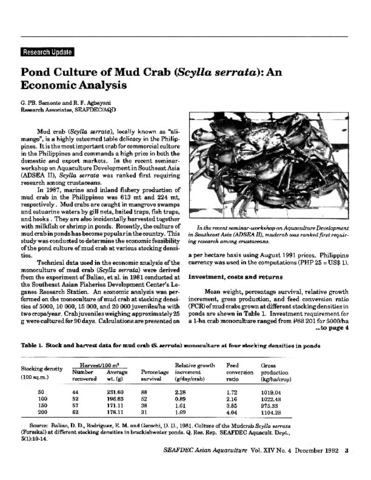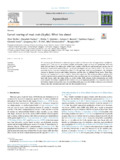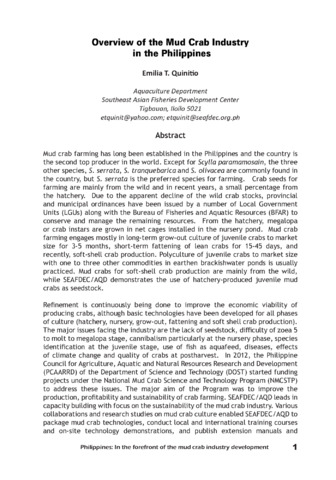Pond culture of mud crab (Scylla serrata): An economic analysis
- Global styles
- MLA
- Vancouver
- Elsevier - Harvard
- APA
- Help

วันที่
1992Page views
3,412ASFA keyword
AGROVOC keyword
Taxonomic term
เมตาดาต้า
แสดงระเบียนรายการเต็ม
Share
นามธรรม
The findings are presented of a study conducted to determine the economic feasibility of the pond culture of mud crab (Scylla serrata) at various stocking densities. Investments, costs, and returns are given for a 1 ha crab monoculture at 4 stocking densities - 5000, 10,000, 15,000 and 20,000. Results show that mud crab monoculture in brackishwater ponds is economically feasible at stocking densities of 5000/ha and 10,000/ha.
Description
Source: Baliao, D. D., Rodriguez, E. M. & Gerochi, D. D. (1981). Culture of the mudcrab Scylla serrata (Forsskal) at different stocking densities in brackishwater ponds., Quarterly Research Report, 5(1), 10-14.
การอ้างอิง
Agbayani, R. F., & Samonte, G. P. B. (1992). Pond culture of mud crab (Scylla serrata): An economic analysis. SEAFDEC Asian Aquaculture , 14(4), 3-5. http://hdl.handle.net/10862/1793
Type
magazineArticleISSN
0115-4974คอลเลกชัน
Related items
Showing items related by title, author, creator and subject.
-
Larval rearing of mud crab (Scylla): What lies ahead
Waiho, Khor; Fazhan, Hanafiah; Quinitio, Emilia T. ; Baylon, Juliana C.; Fujaya, Yushinta; Azmie, Ghazali; Wu, Qingyang; Shi, Xi; Ikhwanuddin, Mhd; Ma, Hongyu (Elsevier, 2018)
The increasing global demand for mud crabs (genus Scylla) and threats to the wild populations highlight the urgency of fully rearing them in captivity. Despite considerable progress in mud crab production, most crab farms ...
; Baylon, Juliana C.; Fujaya, Yushinta; Azmie, Ghazali; Wu, Qingyang; Shi, Xi; Ikhwanuddin, Mhd; Ma, Hongyu (Elsevier, 2018)
The increasing global demand for mud crabs (genus Scylla) and threats to the wild populations highlight the urgency of fully rearing them in captivity. Despite considerable progress in mud crab production, most crab farms ... -
Mud crab pond and pen culture
Rodriguez, Eduard M. (University of the Philippines Aquaculture Society, Inc, 2001) -
Overview of the mud crab industry in the Philippines
Mud crab farming has long been established in the Philippines and the country is the second top producer in the world. Except for Scylla paramamosain, the three other species, S. serrata, S. tranquebarica and S. olivacea ...





